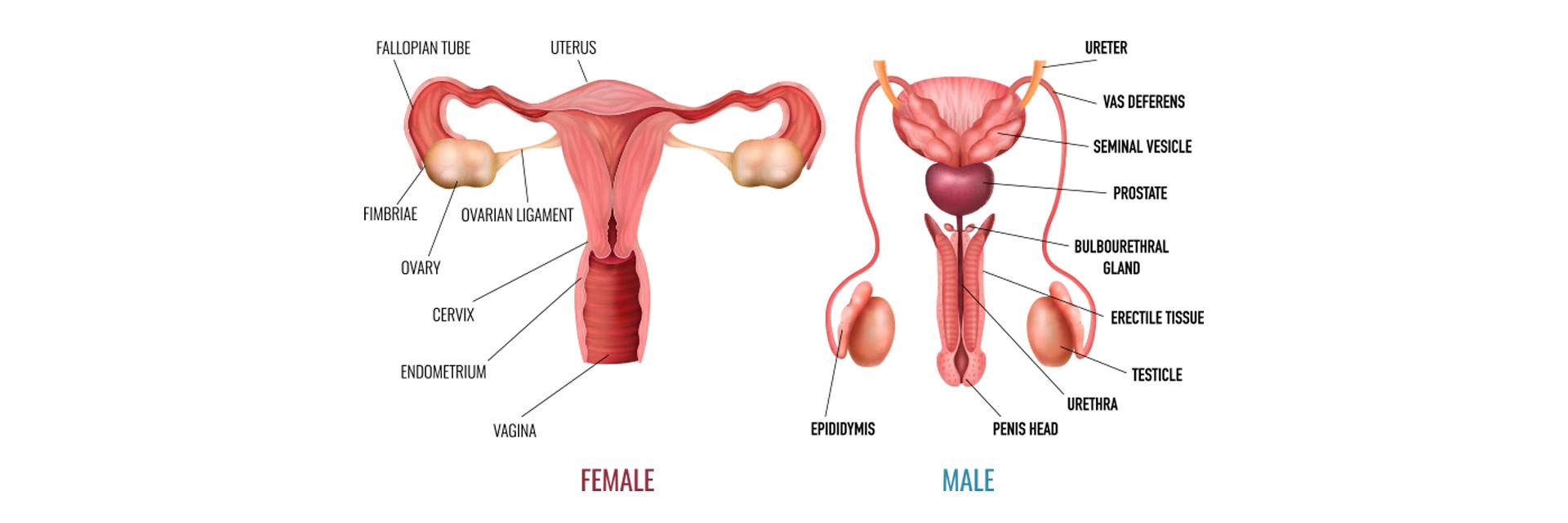The vulva includes components such as labia majora, labia minora, clitoris, urethra, and vaginal opening which makes the female external genitalia.
Labia majora are the prominent pair of skin folds which are also defined as the larger lips. During sexual arousal, labia majora engorges with blood and appears swollen.
Labia minora also known as smaller lips, is a pair of small skin folds which becomes engorged with blood and appear swollen.
The clitoris functions as a sensory organ in females. The part of the clitoris which protrudes to the exterior of the vulva known as the glans clitoris is supplied by nerves and has many blood vessels. It is estimated that approximately eight thousand nerve endings consist in the glans clitoris which makes it become simulated during sexual arousal.
The vagina is a muscular canal, elastic in nature which lies posterior to the urethra opening. A membrane called the hymen usually covers the distal opening of the vagina partially. Vagina serves for sexual intercourse and childbirth. Additionally, during menstruation, the blood outflows through it.
The uterus is a muscular organ that functions as a childbearing structure in females. It has four parts: the fundus (the part above the opening of fallopian tubes to the uterine cavity), body (largest part), isthmus (the part where the uterine body meets the cervix), and cervix ( uterus’s opening to the vagina). A special lining membrane called endometrium lines the entire uterine cavity which sheds during menstruation.
Ovaries are paired oval-shaped organs which secrete estrogen and progesterone hormones placed lateral to the uterus.
The fallopian tube (oviduct or uterine tube) connects the ovaries with the uterus. It is responsible for carrying the fertilised egg/ ovum to the uterine cavity for implantation.
The male reproductive system of internal and external structures. The testes, epididymis, vas deferens, and prostate are the internal structures. Penis and scrotum are the external structures
A pair of testis (male gonads/ testes/ testicles) are located outside the abdominal cavity which causes its temperature to be 3° C below normal body temperature. Sperm production and its viability are dependent upon this lower temperature.
The scrotum is formed by the skin and subcutaneous tissue which is divided into two parts to hold two testes. The muscle in the scrotum contracts when cold and when a man gets sexually aroused which allows testes to move closer to the body for warmth.
The penis is an external reproductive organ which is cylindrical in shape and consists of erectile tissue. Sperm is transferred to the vagina through the penis. The penis has a root, body and glans penis. Glans penis is covered with foreskin or prepuce which is a loose fold of skin. The urethral orifice opens at the tip of the glans penis.
Epididymis is a long tube which supports the maturation of sperm and its temporary storage. The sperm leaving the testes are immature and as they move along the epididymis, they become fertile.
Vas deferens are also known as ductus deferens. The portion of the vas deferens near the epididymis is responsible for storing sperm.
The urethra expands from the urinary bladder and opens to the tip of the penis as a urethral orifice. Both semen and urine get passed through the urethra. When semen passes through the urethra, urine is avoided from entering the urethra with the contraction of the sphincter.
Seminal vesicles are paired glands that produce fluid that consists of fructose which provides energy sources for sperm. (They also produce prostaglandins that support in mobility and viability of sperm and protein which cause slight coagulation of semen after ejaculation)
A Prostate gland is located right below the urinary bladder and produces fluid with forms the largest part (60 per cent) of semen.






